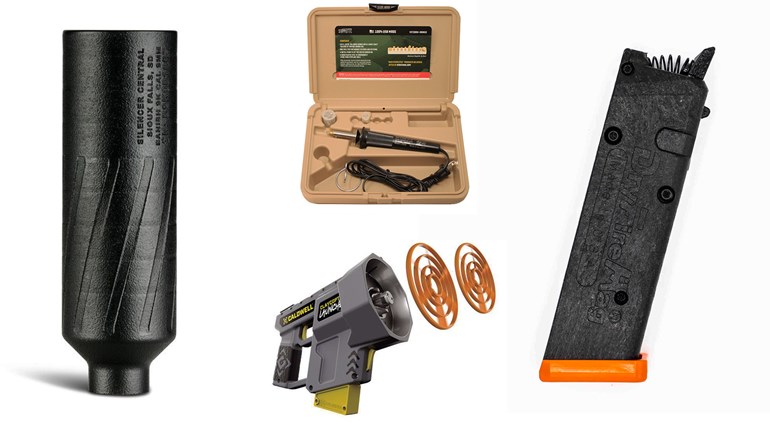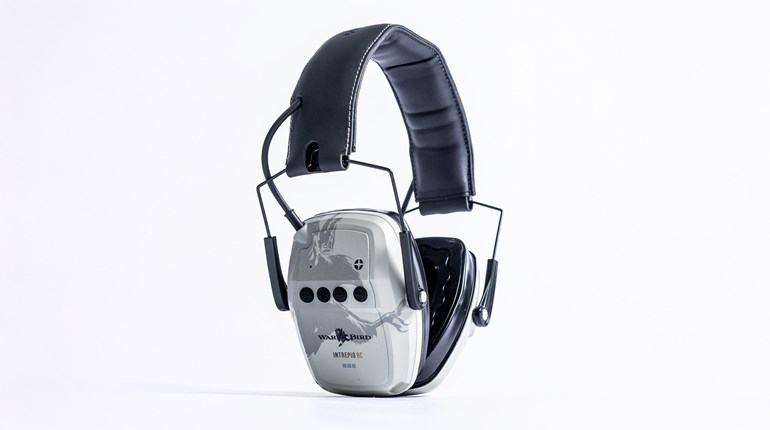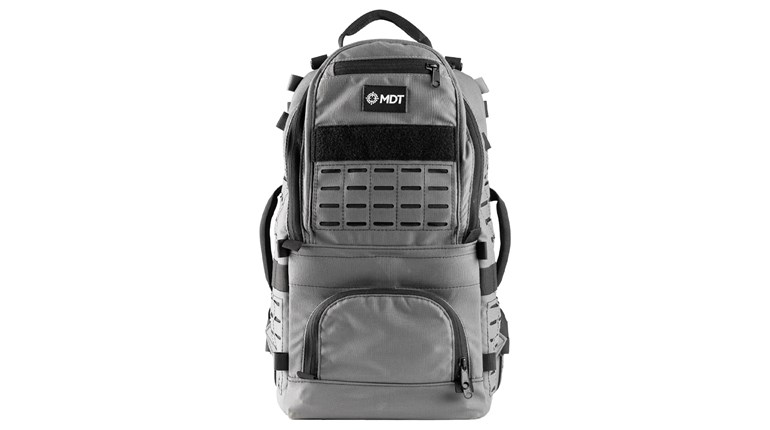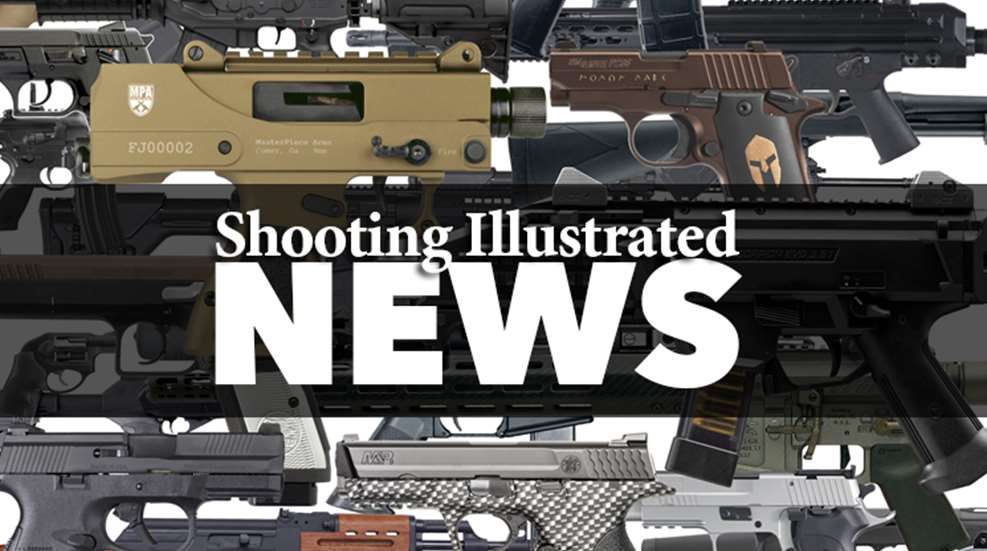
It's always the sweetest sleep that's interrupted. The sound of your front door being kicked in wakes you from a wonderful place. You grab your home-defense rifle as several voices fill the house with coarse and vulgar threats, followed by gunshots. The phone lines are down, and when your bedroom door is smashed open a few minutes later, your training takes over.
It feels like your head explodes with the concussion of the rifle's report. Your ears feel like they are bleeding, and you are completely disoriented. Before you can recover, the bad guys are on you.
The piercing noise and concussion from any defensive rifle fired in an enclosed space can be like a flash-bang grenade going off. It can take you out of the fight during those critical few seconds. Even shooting a handgun inside an enclosed space can disorient you momentarily. Though rarely considered, it only takes a few seconds to put on ear protection that could allow you to stay in the fight.
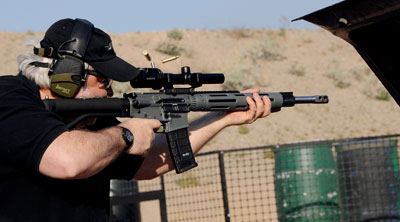
My choice is electronic hearing protection, which is available as both earmuffs and in-the-ear devices. These high-tech tools have electronics designed to filter and even enhance sounds, so you can hear what is going on. With some versions, you should be able to hear a wider range of frequencies or sound levels than when wearing traditional earmuffs or plugs. You may even hear better with these devices than with the naked ear. Electronic ear protection contains sensors that recognize noises loud enough to cause hearing damage, and instantly shut down the circuitry to suppress potentially harmful sounds.
These little marvels of technology can also do some amazing things, like allow you to communicate with one or more other people via radio. Some employ Bluetooth technology to let you use your cell phone hands free to call the police, so you can focus your attention and hands on being ready to defend yourself and your loved ones. The sound quality and the features, of course, vary from model to model, but even the most inexpensive unit enables you to hear what's going on while still protecting your hearing.
There are pros and cons to both styles. The earmuffs have a lot more room for electronics and tend to have more features. For communications and Bluetooth compatability, they are by far the best choice. Muffs are also the fastest to put on and the easiest to operate in the dark. Even those models with a lot of options are much less expensive than in-the-ear styles. On the negative side, earmuffs are more prone to be knocked off in a fight. They can also hit the stock on a rifle or shotgun and be bumped out of place—or bump your sight picture out of alignment.
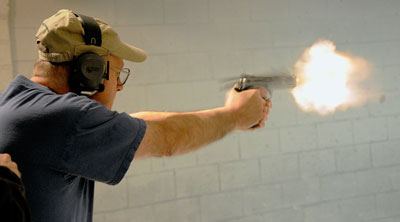
In-the-ear electronic hearing protectors will stay in place better during physical activity. They also remain clear of the buttstock on a rifle or shotgun. Unlike muffs, you can use a telephone with them, which is almost impossible with over-the-ear devices. The best models can be custom-tuned to the user's hearing profile, which means if you suffer from some degree of hearing loss, they can enhance the lost frequencies while not modifying those frequencies you hear normally. This makes what you hear sound clearer and in a more normal modulation level, which aids in judging the distance to and the direction of sounds.
In-the-ear models tend to be more expensive than electronic muffs. Usually they require users to make an ear mold and send it to the manufacturer for a custom fit. Another negative is they take a bit longer to don, and the process is more difficult in the dark. They are color-coded for the left and right ears, and we all know how color fades with a lack of light.
When I am alert, I can grab muffs, put them on and activate the electronics in an average time of 3 seconds. Putting plugs in my ears takes about 6 seconds on a good run and 8 seconds on average. But that's when I am alert and racing a stopwatch.
Disoriented from sleep and in the dark, I suspect the times will be different and certainly longer. I could test that, but I am not dedicated (or dumb) enough to ask my wife to wake me multiple times in the middle of the night and stand there with a stopwatch to see how I do. What I know is any amount of time spent putting on hearing protection will be—in most cases—more than recouped should I have to engage an attacker, or multiple attackers, inside an enclosed space.
I've had experience with several models, mostly at the range and in competition, and I know these units work. Keep in mind, this report is far from complete. There are new offerings all the time as technology continues to improve. But, these models are a good place to start when searching for ear protection—an overlooked, yet vital, piece of home-defense gear.
Earmuffs
This Peltor unit is the elite of electronic muffs. The headset attenuates 26 decibels and has surround microphones that capture external sound, which is analyzed at ultrahigh speed. Weak sounds are amplified while noise—including a sudden, loud report from a gun—is reduced to a harmless level. The WS SportTac runs on two rechargeable AA batteries.
Shooters can easily adjust the volume of surrounding sounds and even filter out certain unwanted frequencies with an equalizer function. The Bluetooth feature allows a wireless connection to a cell phone with voice dialing, so your hands remain free and your eyes can stay focused on the danger. The Bluetooth also works with radios, so multiple family members in different locations can stay in constant contact. Additionally, there is an input to connect communication devices by wire. A speech-activated microphone is integrated into one of the cups, and the headset is small enough to work well with rifles and shotguns.
I have used mine while hunting in Lithuania as well as for a lot of range time and competitive shooting. I also find them perfect on a noisy bus or airplane—I turn down the ambient sound and pipe in a recorded book from my iPhone using the Bluetooth function when the kid in the row behind me has a tantrum. Trust me, it makes travel more bearable.
MSRP: $491.78(800) 328-1667
Four, omnidirectional, high-frequency HD microphones in this earmuff enhance sounds up to eight times their audible level. It features active compression for any sounds louder than 85 dB.
The Ranger HD has independent volume and adjustable frequency controls, so you can fine-tune each ear cup to suit your hearing using the unit's digital processing. It gets approximately 200 hours of battery life from the N-size batteries. I am not a fan of N batteries, because they are expensive and difficult to find, but other than that, the Ranger HD is an excellent choice.
I have used it on the range quite a bit and found it comfortable. Low profile with sculpted bottoms, the design clears a rifle or shotgun stock. Mine has a camo finish, but it is also offered in black.
MSRP: $319.99(317) 502-7942
Combative Edge Electronic Range Muff
Designed for tactical use, the Electronic Range Muff (ERM) has a noise-reduction rating of 24 dB and active sound compression for sounds louder than 85 dB. It features a gain of 45 dB for up to seven times normal hearing to help you identify sounds coming from the bad guys.
Each ear cup has independent volume controls, so you can balance the sound to your liking. Battery life is 200 hours with two N-size batteries.
Butyl-rubber ear pads provide maximum cushioning and perform-ance, making the ERM a good choice for extended range work.
Because the unit's ear cups have a thin, very low profile, it is compatible with long guns. The mid-priced ERM is rugged, simple and lightweight, and I have found it to be comfortable during extensive use at the range and in competition.
MSRP: $179.99(610) 639-9041
This popular earmuff from Howard Leight has a noise-reduction rating of 22 dB. It is compact and well-shaped, with a low profile to avoid interference with long-gun stocks. The Impact Sport amplifies sounds up to three times the normal hearing range, which helps those suffering from hearing loss.
The Impact Sport is lightweight, tipping the scales at only 10.5 ounces with batteries installed. There is a 350-hour life using two AAA batteries.As an added bonus, a jack enables the user to connect a handheld radio or MP3 player for communications or entertainment.
This unit is relatively inexpensive, yet it provides a good value. I use mine often, and it continues to be a great choice for the money.
MSRP: $74.69(800) 430-5490
In-the-Ear-Protection
Electronic Shooter's Protection Elite Classic
Despite the hefty pricetag, this is actually the entry-level, in-the-ear model from Electronic Shooter's Protection. (I won a gift certificate for my Elite Classic set at the MGM Iron Man 3-gun match.) The company offers several higher grades having additional features.
The units use analog technology, but they still work great. Sound quality is not at the same level as one would expect from a product with triple the cost, but it is still amazingly clear and sharp.
The electronics shut down at 90 dB, and the plugs have a 25 dB noise-reduction attenuation rating to filter out hiss and static. Each plug has a volume control and runs on No. 13 batteries.
As with any in-the-ear, custom-fit model, the Elite Classic units require you to have molds made of your ears. Multiple color combinations are available to further customize these tiny but high-tech earplugs.
MSRP: $900(303) 659-8844
Phonak is a Swiss manufacturer of hearing devices from TV-studio earpieces to the units used by executive protection professionals. The company knows what it's doing when it comes to your ears.
The Serenity DP contains two in-the-ear plugs made from ear molds. They are connected by wires to a power pack unit worn around the neck like a necklace. Microphones are on-the-ear units, and the power pack has a single AAA battery that will run for 400 hours.
The price, performance and battery life make this an excellent choice for electronic hearing protection. Carrying the power pack around your neck takes some getting used to, though.
MSRP: $477(630) 888-0775
These high-end, in-the-ear hearing protectors from SportEar are small and powerful. They are custom-fitted using ear molds.
The four-channel, 12-band digital technology provides improved sound quality, and the units actually tune the sound enhancement to mitigate hearing loss, just like the highest quality hearing aids. The frequencies related to hearing loss (usually on the high end) can be enhanced, while the sounds you normally hear remain at normal levels. This creates a balance and eliminates the aggravation induced by everything being made louder.
You can access four different programs by pushing a button, allowing up to a fourfold gain. Even someone with hearing loss can turn the volume up enough to hear. Circuitry suppresses background noise and enhances speech, so conversation is easier to understand, particularly for those with high-frequency hearing loss. The units provide 24 dB of noise reduction and run on No. 10 batteries.
I have used mine for a couple of years on the range, in competition and while hunting. They are expensive, but I am very happy with their performance.
MSRP: $1,999.99(866) 422-5502













